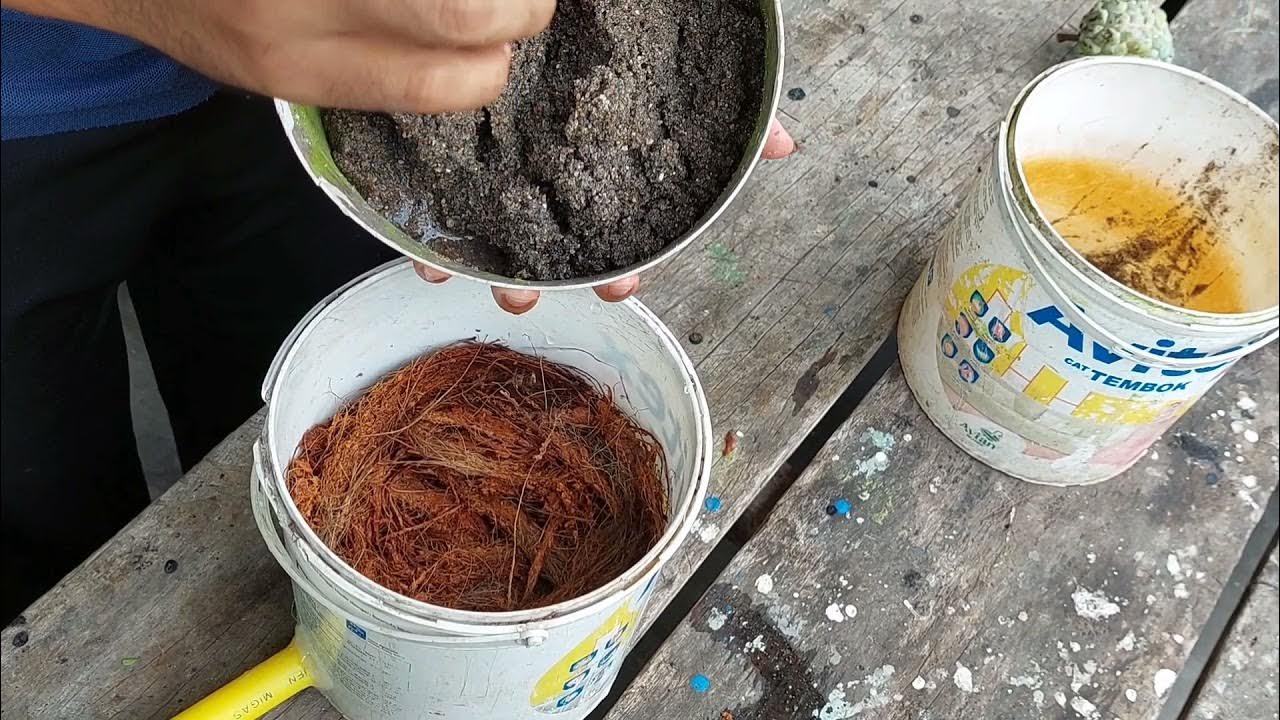Joss..!! UJI COBA filter air sumur bau karat sebelum dikirim ke Cijantung, Pasar Rebo, Jakarta Timur
Summary
TLDRIn this video, the creator demonstrates the process of testing a water filtration system designed for borehole water containing rust, oil, and iron. The filter, which uses Malang sand as its primary filtration medium, is tested to ensure its effectiveness before being shipped to a customer in Cijantung, East Jakarta. The video showcases the filtration process, the testing procedure with tea as a simple indicator of water quality, and the results after filtering, where the water becomes clear and free of contaminants. The creator emphasizes the simplicity yet effectiveness of the system, aiming to provide clean water for users.
Takeaways
- 😀 The video demonstrates a trial run of a filter designed to purify well water contaminated with iron, oil, and rust before sending it to Cijantung, Jakarta.
- 😀 The filter uses a simple setup with a small drum and Malang sand as the main filtering medium.
- 😀 Eight bags of Malang sand, each weighing around 5 kg, were used to fill the filter drum.
- 😀 The water being filtered was initially tested with tea to identify the presence of iron and manganese, as the tea turned black upon contact with the water.
- 😀 The filter setup involves a basic design with a top, bottom, and middle sections for filtration, as well as an aerator for oxidation.
- 😀 The filtration process involves using an aerator to introduce oxygen into the water, which is part of the oxidation process for removing impurities.
- 😀 Initially, the water output from the pump is clear, but as filtration continues, it becomes cloudy due to debris and impurities from the filter media.
- 😀 The filter successfully removes oil, rust, and iron, as shown by the clean water after filtration, which doesn't turn cloudy or oily after testing.
- 😀 The filter's effectiveness can be tested using simple methods, such as adding tea to the water to observe changes in color, indicating the presence of impurities.
- 😀 The filter uses only Malang sand, with no additional materials like ijuk, dakr, or activated carbon, proving that Malang sand is sufficient for the filtration process.
- 😀 The video is a demonstration of the filter's performance in real-time, showing the process from filling the drum with sand to achieving clear, purified water after filtration.
Q & A
What type of water filtration system is being tested in the video?
-The video showcases a water filtration system designed to address issues like rust, oil, and iron contamination in well water. It uses Malang sand as the primary filtration media.
Where is the filtration system being sent after the test?
-The filtration system will be sent to Cijantung, Pasar Rebo, Jakarta Timur after the test is completed.
What material is used for the filtration media in the system?
-Malang sand is used as the filtration media, with approximately 8 bags of sand, each weighing around 5 kg.
Why is air tea used during the water testing process?
-Air tea is used as a simple and cost-effective way to test the water for the presence of iron or manganese, as it changes color when mixed with water containing these metals.
How does the filtration system work to treat the water?
-The system utilizes an aerator with a Venturi effect to add oxygen to the water, which helps oxidize and remove iron and other contaminants. The water is filtered through Malang sand, which traps impurities.
What does the color change in the tea test indicate?
-The color change of the tea from its original color to black indicates the presence of iron or manganese in the water, showing that the water is contaminated.
What are the components of the filtration system shown in the video?
-The filtration system includes a drum (drom), Malang sand, a Venturi aerator for oxygenation, and taps with different colored outputs for water collection.
What is the significance of the oxidation process in the filtration system?
-The oxidation process is critical for converting dissolved iron into solid particles, which can then be removed by the filter. The aerator facilitates this by adding oxygen to the water.
Why does the video emphasize testing the water quality before sending the filter to the customer?
-The video emphasizes testing the water to ensure that the filtration system performs effectively before it is delivered to the customer, confirming that the water will be treated as expected.
How does the water change after it has been filtered?
-After filtering, the water becomes much clearer and free from contaminants like rust and oil. The final test with tea shows that the water is now clean, as it no longer changes color when mixed with the tea.
Outlines

This section is available to paid users only. Please upgrade to access this part.
Upgrade NowMindmap

This section is available to paid users only. Please upgrade to access this part.
Upgrade NowKeywords

This section is available to paid users only. Please upgrade to access this part.
Upgrade NowHighlights

This section is available to paid users only. Please upgrade to access this part.
Upgrade NowTranscripts

This section is available to paid users only. Please upgrade to access this part.
Upgrade NowBrowse More Related Video

DIY: Genius Water Filter That Sets Up In Seconds And Last A Lifetime

ANALISA ALKALINITY, TDS, TSS PADA AIR SUNGAI DAN AIR FILTRASI

TANPA KAPORIT..!!! Simak nih, cara mengatasi air sumur bau karat, zat besi tinggi

Praktikum Pengukuran Debit Air, Tekanan Air dan Volume Air

Penyaring Sederhana Air sumur mengandung Zat Besi

Separating Mixtures – Filtration
5.0 / 5 (0 votes)